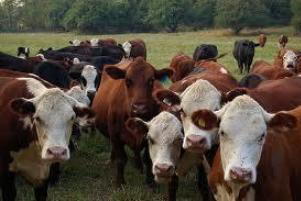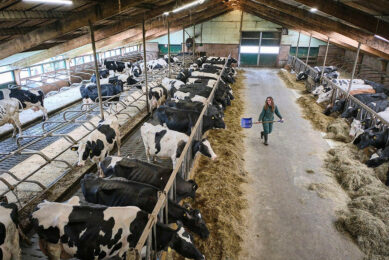Keeping cows grazing has its benefits

Feed and forage represents the largest annual production costs, and provides the greatest opportunity for you to make significant changes in a short period of time. In fact, annual feed costs typically make up the majority of differences between high-cost producers and low-cost producers.
According to University Extension analyses from several states with significant numbers of cow-calf operations have determined feed and forage costs represent 50% to 70% of annual cow costs. Further, a survey by USDA’s Economic Research Service found national total operating costs of $610 per cow in 2012. That survey also showed a wide range of operating costs—from $387 per cow in the Fruitful Rim (Florida and the Gulf Coast of Texas) to $884 per cow in the northern Great Plains.
The devastating 2012 drought contributed significantly to higher cow-calf production costs in regions such as the Northern Plains, but data from previous years confirm that a variation of $500 from low-cost producers to high-cost producers is not uncommon.
Heading into winter, there is little you can do to change the cost of your harvested and stored feed supplies. Now, however, is an excellent time to start planning for grazing and forage harvests for next year.
Create a plan: “Feed is not only the major cost item in cow-calf production, but it is also the major factor influencing reproductive performance, which is the most important factor in cowherd profitability,” explains Bob Weaber, Kansas State University Extension beef specialist. “This relationship establishes what should be the primary goal of cowherd nutrition programmes—maintaining an optimally high reproductive rate.”
Whether your operation is large or small and it includes native or tame grass pastures, proper planning can increase forage utilisation and help improve reproductive efficiency. You should establish goals that:
- As many days as possible, meet the nutritional needs of the livestock from standing forage.
- Harvest forage as efficiently as possible.
Match cows to forage: University of Nebraska beef specialist Rick Rasby says producers should select cows that match their feed resources.
“It is not only about output (weaning weight) but also about input (cow costs),” Rasby says. “On a fixed feed resource base, as the nutrient needs of the cowherd increase as a result of increased mature weight and/or milk production, the number of cows that can be managed on this resource base decreases. If the number of cows don’t decrease, then outside feed resources need to be incorporated into the feeding programme so that reproduction is not compromised. Increased mature weight and milk production increase annual cow costs. The flip side of that is that weaning weight will increase.”
He says keeping your cows grazing is more economical than carrying harvested feeds to them to meet their nutrient requirements. As mature weight increases and/or milk production increases, the number of cows grazing a fixed pasture resource base needs to decrease. It is more profitable to produce another calf as compared to another couple of pounds of weaning weight per calf.
Pasture management: How you manage your pastures will also have an effect on how much you can reduce costs. That’s why many grazing specialists recommend you consider a management-intensive grazing (MIG) system. This type of grazing system can significantly increase forage utilisation rates.
The utilisation rate in continuously grazed pastures is about 30% to 40%. As in an MIG system, moving cattle from one grazing paddock to another can increase the utilization rate. Further, a four-year grazing study at the University of Missouri Forage System Research Center found that increasing the frequency that animals are moved can also increase grazing days per acre. The Missouri researchers found that moving cattle every three days compared to every two weeks resulted in 40% more grazing days per acre.
Michigan State University Extension educator Kable Thurlow says the same types of improved efficiency can be found in the grazing of stockpiled forages, crop residues and cover crops. The more frequently cattle are moved to a new paddock or strip of forage, the higher the utilisation rate will be. Management is the key!
If you typically need to supplement grazing cattle with harvested feeds or if you overgraze your late summer pastures, you probably need more acres in the grazing system. You also may need to reevaluate your stocking rate and consider reducing that rate.
Crop residues and cover crops also offer an opportunity for an extension of the grazing season. Corn stover and cover crop grazing are an attractive option to help lower the cost of winter feeding.
AGWEB











